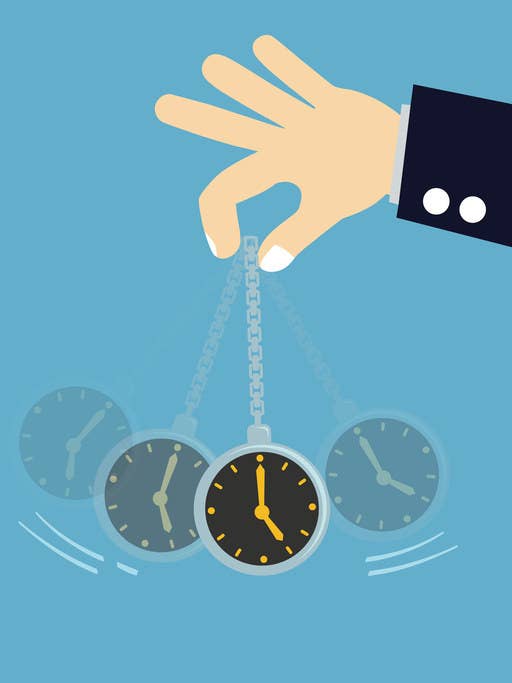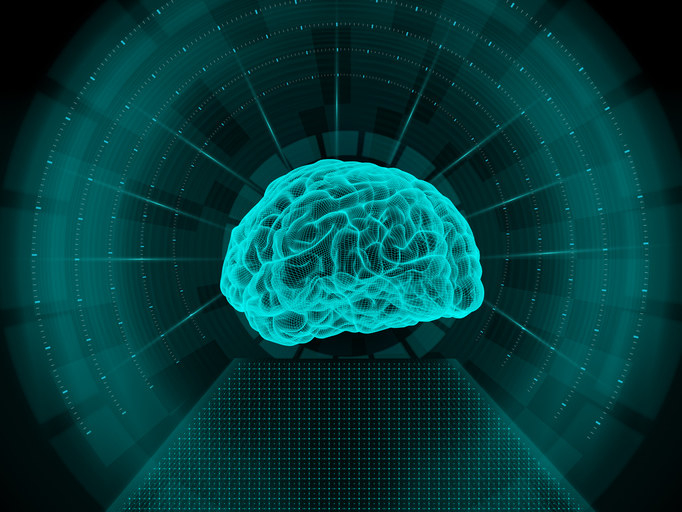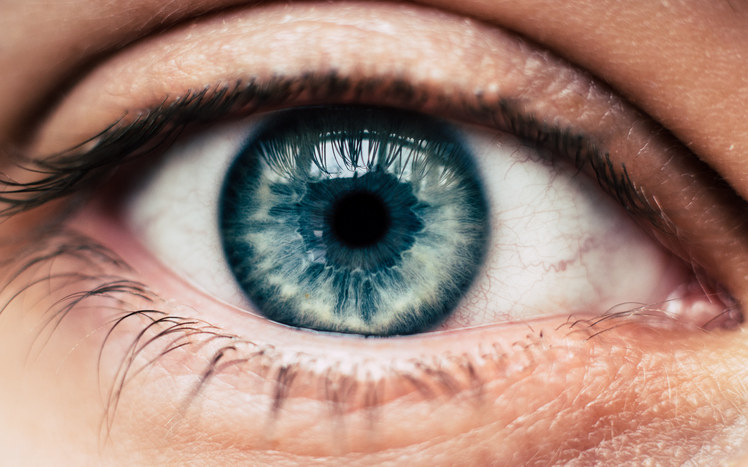There is increasing scientific evidence to say that hypnosis is an important psychological tool with some exciting applications, from curing anxiety to reducing pain, and potentially fighting addiction.
So why do we still tend to think of hypnosis as a sideshow performance?
And what's the science behind it?
Earlier this year a study was published in the Journal of Experimental Psychology (published under the American Psychological Association) that found hypnosis can have profound effects on executive function – the cognitive processes that regulate our goals as well as the thought processes and actions oriented towards achieving those goals.
The research, from the Australian Research Council's Centre of Excellence in Cognition and its Disorders (CCD), aimed to disrupt executive control in participants in a task where participants are instructed to randomly respond "yes" or "no" to trivia questions that pop up on a screen.
The trivia questions ranged from easy ("Are there 12 months in a year?") to very difficult ("Are there 7,107 islands in the Philippines?").
This is known as the Clever Hands test and it has been used in previous experiments that have shown that people are unable to switch off their unconscious motivation for answering the trivia questions correctly.
Truly answering the questions at random would logically give an accuracy rate of around 50% for "yes" or "no" questions but that is not seen in the results of these trials.
Dr Vince Polito, a co-author of the study from CCD, told BuzzFeed News that people are unable to switch off their automatic response mechanism even when motivated by money or placed under time constraints.
"People always, even with those manipulations, think that they're responding randomly but they're not, they're very correct."
However, in the CCD study, 60 participants were given a hypnotic induction (including deep breathing, relaxing and attention focusing) and were then instructed with the following:
"When you respond to these questions I would like you to answer completely randomly. That's right, I want you to answer randomly.
You will not generate a predictable pattern of yes/no or yes/yes/yes, but instead will generated a random sequence.
You will find it easy and natural to just respond randomly to each question. You will find it easy to answer randomly."
The researchers found that hypnotising participants successfully inhibited their automatic tendency to correctly answer the easy questions.
Polito notes that this could have some wide clinical applications, where automatic responses need to be suppressed.
This successful response to the Clever Hands test highlights a potential for hypnosis in "treating addictions or compulsive behaviours, where people don't feel like they're able to inhibit very ingrained responses", said Polito.

This sort of inhibition of low-level automatic brain responses has also been shown previously in experiments where the Stroop response has been derailed by hypnosis.
The Stroop response is named after the American psychologist John Ridley Stroop who observed the effect in a 1935 experiment. In this famous cognitive psychology test participants are shown the names of colours on a screen, written in colours that do not correspond to the colour named.
The participants are then asked to name the colour of the letters, ignoring the word written. This is a frustratingly difficult task because the brain's automatic, low-level response is to read the word.
One 2002 study demonstrated that by hypnotising participants and suggesting that the language that appears on a screen is foreign and they are unable to understand it, the Stroop effect is overcome and participants will correctly name the font colour.
However, while Polito states that there is a general consensus in the hypnosis field that this experiment gave true results, there are some controversies attached to the Stroop effect study, with some failures to replicate its results.
Can everyone be hypnotised?
The ability to be hypnotised (hypnotisability) varies across the population.
Approximately 10-15% of people are known as "high hypnotisable" and they will experience alterations in perception, cognition, memory and action while under hypnosis. Another 10-15% are "low hypnotisable" and these are people who experience almost nothing in response to suggestion.
The rest of the population exists somewhere in the middle.
Polito says there is a very normal distribution for hypnotisability in the population, and that hypnotisability is not statistically related to intelligence or any other traits.
"Hypnotisability doesn't relate to general suggestibility, it's not that these people are gullible or willing to do whatever they're told in any context, it's not related to intelligence or creativity or any kind of other personality traits that have been identified," said Polito.

The investigation of the effects of hypnosis on the brain has found that there are observable structural differences between high hypnotisable and low hypnotisable people.
Another study published this year from CCD, headed by emeritus professor Max Coltheart, used Transcranial Magnetic Stimulation (TMS) to disrupt activity in a part of the brain and found that it increased hypnotisability.
TMS is a non-invasive targeting of neurons with an electromagnetic coil placed on the outside of the head.
The researchers found that disrupting activity in the right dorsolateral prefrontal cortex – an area that has been implicated in belief formation and evidence evaluation in disorders involving delusions – increased hypnotisability.
Polito, who was also a co-author on the TMS study, said that this neurological manipulation implies that the right dorsolateral prefrontal cortex area is key in determining people's hypnotic responsiveness.
He also said that neural pathways appear to change significantly for high hypnotisable study participants.
"There's quite a few studies that show suggestion for phenomena that are similar to clinical symptoms and when highs [high hypnotisable] act out those suggestions, what's happening at the neural level is actually quite similar to what's happening in the genuine patient," said Polito.
"So that's quite compelling evidence that what hypnosis is doing, it's not just changing someone's willingness to do what they're told – which is a common suspicion – but that it's actually changing the cognitive and neural levels."
One 2003 study found striking evidence of these neurological changes among 12 participants.
First, the participants were simply asked to feign paralysis in their left legs and their brain activity was monitored in a PET scan. They were then hypnotised and it was suggested to them that their left leg was paralysed before another PET scan.
Scans of these participants revealed neurological changes when the participants were hypnotised that mimicked the disruptions seen in actual paralysis, compared to when they were just faking it.
Can these effects of hypnosis be used for evil?
There is evidence that hypnosis cannot be used to manipulate people to act in the way television depictions would have us believe.
A great deal of research was undertaken throughout the 20th century investigating how hypnosis can engage people in unethical or dangerous behaviours they would not typically engage in.
In one famous 1939 study participants were asked to undertake a number of dangerous activities such as reaching to handle venomous snakes or throwing jugs of what they believed to be acid at experimenters' faces.
The author concluded that hypnotism could be used to induce dangerous, criminal or illegal behaviour.
However, a replication of this study in 1965 found that while the hypnotised participants did, in fact, submit to the requests of the researchers, so did the participants who weren't hypnotised.
When asked why they would do such a thing, the participants who weren't hypnotised simply answered that they recognised they were in a laboratory setting and the researchers wouldn't ask them to do anything they knew was actually dangerous.
"It's hard to be really conclusive from that, but the way that's interpreted is that people under hypnosis aren't going to do anything particularly more dangerous or that they wouldn't do outside of hypnosis," said Polito.

How else can we apply hypnosis?
Hypnosis has a number of clinical applications for treating psychological disorders.
For example, it has been shown to be an effective treatment for anxiety and stress-related disorders. This has been demonstrated within medical settings when patients experience anxiety related to treatment, surgery and medical or dental procedures.
There is also evidence that hypnosis can help to alleviate anxiety related to test and performance, which has been applied in the field of professional sport.
Hypnosis has also been shown to be effective in reducing depressive symptoms, as well as in teaching patients strategies to prevent recurrences of depressive episodes.
Hypnosis also has profound effects in pain management.
In May a study conducted by international researchers investigating the effects of hypnosis on chronic back pain, was published in the Journal of Pain.
The research randomly assigned 100 participants to receive either pain education training or pain education training combined with hypnosis.
Pain education training, also known as Explain Pain, is a successful new method of addressing chronic pain that involves education about chronic pain, including its biological basis, and realistic management strategies for patients.
Sessions of Explain Pain typically last 90 minutes.
The participants in the hypnosis group received a hypnosis session every week for six weeks on top of these education sessions.
A combination of Explain Pain and hypnosis was shown to have extremely positive results for patients for up to three months after the trial.
Associate professor James McAuley from Neuroscience Research Australia (NeuRA) and one of the study's co-authors, told BuzzFeed News that these results trumped everything he has seen in traditional pain management tactics, such as physiotherapy or chiropractic treatment.
"I've spent the last 20 years of my career investigating all of the treatments people might have for back pain ... we've investigated those in clinical trials and we found them to be almost non-effective... they can reduce your back pain by about one point on a 10-point scale," said McAuley.
"The trial was successful, in general you can improve people with back pain by just educating them about pain ... if you add hypnosis on top of that, you can reduce the pain even more. And we're talking now about a 60% reduction in pain intensity, which is about double what you get from taking an opioid."

McAuley notes that there is still very little understanding on a neurological level why this might be happening but he theorises that hypnosis is helping people with chronic pain by upping the emotional regulation in their brains.
"Some of the stuff that we have found out [in people with chronic pain] is that there are disrupted pathways between the prefrontal cortex, that's the front of your brain that you use for thinking and regulating emotions, and that seems to be disrupted in people with pain.
"I think what we're able to do with clinical hypnosis is to change those pathways, we can sharpen them up and make it easier for people to relearn how to control their emotional responses to pain, which are out of control for most people who have chronic pain."
While the effects of hypnosis on pain have been studied in a laboratory setting for decades, McAuley says that there is limited evidence to show pain-reduction effects in large, randomised, controlled trials.
These laboratory studies have also been mostly conducted on participants who have pain induced in the laboratory, rather than people who already suffer from pain and this can give mixed results.
"[The studies] provide the groundwork for what we do with real patients, but often they don't translate very well because if you give me pain in the laboratory, my reactions to that are completely different to somebody who's had chronic pain for five or 10," said McAuley.
McAuley is conducting trials at the University of New South Wales to determine the neurological pathways being altered by hypnosis in this chronic pain treatment.
Why is hypnosis still not taken seriously by a lot of people?
Polito believes that there are two main reasons that hypnosis is still not a widely understood or respected practice: popular culture depictions and its lack of industry regulation.
"There's these really strong sort of associations in popular culture, there's hypnosis that's used in entertainment, in big performances, in TV shows, in clubs or RSLs and things like that, and that stuff is pretty different to what we're talking about in the research context," said Polito.
"People dancing around and clucking like chickens, those sort of things don't really match with what we find people will or won't do in the lab."
McAuley adds that these perceptions have always been a struggle for clinical hypnosis.
"It feels like hypnotism is an entertainment tool or it's mind control. In our trial, participants were resistant in the beginning because they thought it was somebody trying to control their mind."
In Australia, hypnosis is also an unregulated industry with no legal governing bodies. This lack of regulation makes it difficult to assess where practitioners have been trained because there are no laws related to adopting the title of "hypnotherapist".

Polito believes this is largely due to difficulty in defining what hypnosis is.
"Essentially, to take a very broad kind of approach to it, hypnosis is just a particular kind of social interaction – it's a conversation between two people in which one person suggests things to another person and the other person may or may not respond.
"It's not that different in many ways to a guided relaxation or something like that, so these boundaries get pretty fuzzy."
McAuley believes that the most important component in regulating the hypnotism market would be transparency for consumers.
"What I would like to know if I went to see somebody is what training they've had. Whether there's a regulatory body that oversees that [is not of concern] but I'd like to at least know where they were trained and what sort of training they've had."
Polito's greatest concern with Australia's lack of hypnosis regulation is that this may undermine the benefits of the practice that science is uncovering.
"It's concerning as a scientist studying hypnosis thinking 'This is an important and interesting phenomenon'. The kind of negative associations around hypnosis make it harder to have this work taken more seriously."
